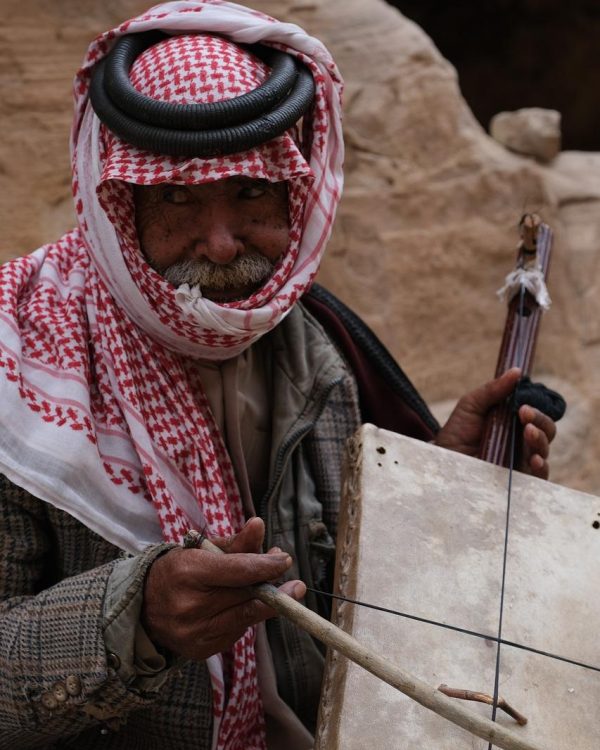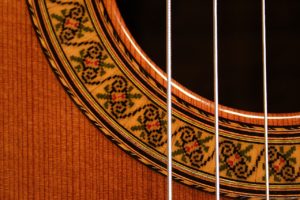Estimated reading time 3 minutes
Table of Contents
Introduction
Do you want to understand advanced heterophony concepts? How does timbre affect heterophony in the ma’luf ensembles? Many cultures organize their music by using heterophony which forms the music in essentially different ways than harmony-based music. Keep reading to understand the relationship between heterophony and timbre.
This post uses musical terms. For definitions, see the Glossary at the end of the article.

Advanced Heterophony Concepts and Flexible Pitch Instruments
“Is timbre important for understanding advanced heterophony concepts?” In societies where the music doesn’t feature harmony, timbre can still have an impact on heterophony. What’s heterophony?
Often there is a single underlying melodic pattern that no single musician actually plays; the melody is stated (and restated with many kinds of variations) in a collective performance. (Sethares 306)
In Middle Eastern music musicians basically perform the same melody.
- Conversely, in East Asia none of the players necessarily plays the core melody at all.
- However, all the instruments play heavily modified versions of it, so much so that East Asian heterophony can sound almost like Western polyphony.
- Instead of the instruments finding agreement through harmony at musical structural points, they find agreement in unisons and octaves.
Since harmony doesn’t control the music’s intonation, the tuning of the variable pitch instruments can be flexible.
Melody is more rugged than harmony. Melodies played in a stretched scale with stretched partials are easily recognizable. (Pierce 98)
Can Akkoc observed that in the scales of traditional Turkish music the pitch clusters around tonic and dominant notes compacted more than the other notes.
[The notes were] fuzzy, sometimes fuzzy to the extent of completely missing [the target notes in] what appears to be a smear created by the performer in certain zones along the pitch axis… (291)
The “fuzzy” notes had larger, less compact pitch clusters and smaller pitch voids. And in at least one instance the pitch void disappeared between two of the notes.
The timbre of the instruments doesn’t directly affect the tuning. However, timbre still interacts with the music in important ways, as we’ll see in the next section.
Ma’luf’s Advanced Heterophony Concepts
“How does timbre work into advanced heterophony concepts?” In the twentieth century, The Radshidiyya Institute in Tunis looked to expand the ma’luf.
[Ma’luf] is characterized by small, solo instrumental ensembles, traditionally made up of a rabab… which may be replaced by a violin… an ud… [a] naqqarat… and tar. (The Garland Encyclopedia of World Music: The Middle East Ruth Davis 327)
The leader of the ensemble, called a shaykh, had been chosen for his depth of musical knowledge.
The shaykh… provided the authoritative rendering for the chorus. Within this framework, however, each soloist interpreted the melodies in his own individual way, embellishing them spontaneously… The result was a heterophonic texture. (327)
The Radshidiyya expanded the ma’luf by adding more instruments. The best shaykhs joined, and they had an ensemble that included:
…six violins, two [rababs], five [uds], three qawanin, a tar and a naqqarat, as well as six male vocalists and one female vocalist. (327)
The experiment failed. Ruth Davis explains:
Such an ensemble was unprecedented, not only in the size and variety of its instruments but, more critically, in that it combined several instruments of the same type. As several shaykhs, unaccustomed to performing together, struggled against one another’s versions of the melodies, heterophony turned into cacophony. (327)
To Western ears, ethnic bowed string instruments can have a nasal sound. However, listeners must be careful not to assume that the instrument makers created inferior instruments. In fact, a large part of the string tone comes from the playing technique.
Because the bow is applied near the bridge, the rebab has a more nasal quality than the violin. (Sethares 210)
For heterophony to work the different versions of the melody must be performed on instruments with different timbres or the heterophony turns into a mess.
Tunisian Ma’luf Video
Final thoughts on Advanced Heterophony Concepts
Let’s review the advanced heterophony concepts:
- Timbre is an important element of Ma’luf music.
- The standards will be different from Western instruments because the needs of the music will also be different.
- The timbre of Western instruments has been designed to fuse together to better facilitate harmony.
- When using heterophony this won’t be desirable.
- Instead, you need to be able to hear the separate instruments in the heterophonic texture.
- The timbre of the Ma’luf instruments helps with this goal.
Related Posts
- How Do You Sing Eastern European Vocal Harmony in 2nds by Ear?
- Tips for Synthesizing an African Balafon Style Xylophone Sound
- Tune Your Ukulele Like a Hawaiian
- Intonation and Supplemented Equal Temperament
© 2023 Geoffrey Keith
Join me for in-person or online lessons today!
Glossary
How to Play and Tune Parlor Guitar Style
Have you just bought a parlor guitar and thought it’d be cool to learn parlor guitar style? The guitar’s tuning impacts how it sounds and what styles will sound good on it. Read more to learn how to play and tune parlor guitar style. Estimated reading time 4 minutes.
Read MoreChord Progression (Including the 12 Bar Blues)
What’s a chord progression? It’s when you have a sequence of successive harmonies. In this post, we’ll look at common chord progressions, including rock n roll, the 12 bar blues, and jazz chord progressions. These can work as either piano chord progressions or guitar chord progressions. Read “Chord Progression (Including the 12 Bar Blues)” to learn the harmonic structure for these three styles of music. Estimated reading time 4 minutes.
Read MoreColor Coding Music for Success
Want to read music? Does your child or music student have a hard time reading notes? Color coding music notation can help. I had a student with amnesia who would forget everything she had learned from the previous lesson. However, she was able to learn beginner level piano music with hands together. Find out how color coding helps students like her. Estimated reading time 11 minutes.
Read MoreOvercoming Writer’s Block in Songwriting
Have you ever looked at a blank sheet of paper and couldn’t think of a single lyric idea? Try these tips for overcoming writer’s block in songwriting. Estimated reading time 4 minutes.
Read More




